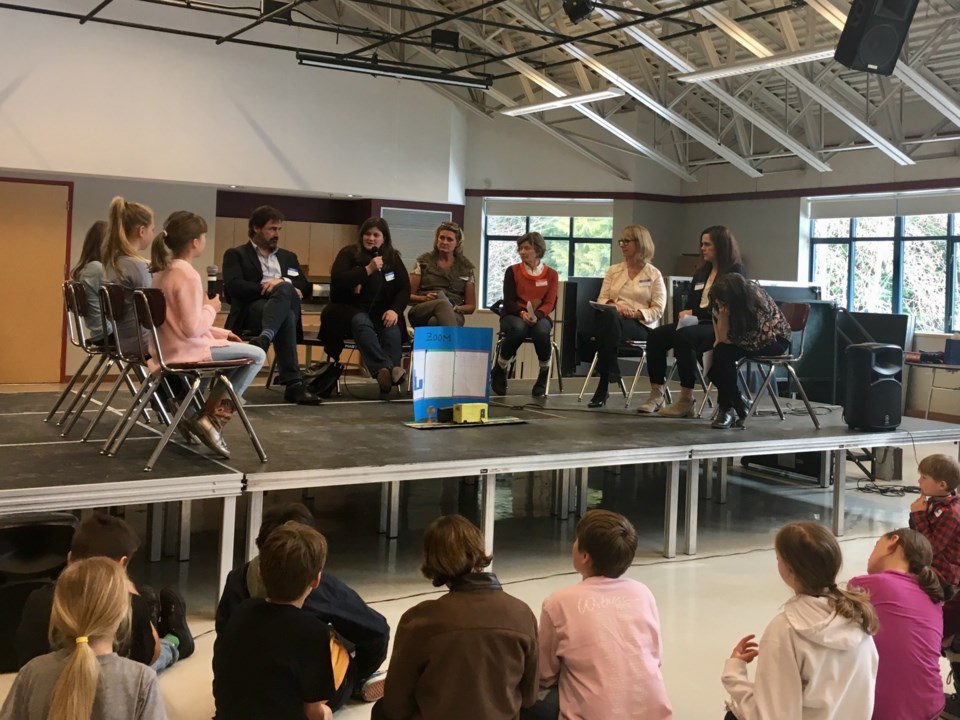It's no secret that housing and transportation are the two biggest-and most frequently discussed-challenges currently facing the Sea to Sky corridor.
But on Friday, April 6, a whole new crowd was welcomed into the conversation.
Over 130 students, ranging from Kindergarten to Grade 12, and 30 staff from across the corridor filled Whistler Secondary School's multipurpose room armed with poster boards, hand-made models and slideshows to display their research-based reports on transportation and housing.
The solutions proposed included everything from better bus systems, overpasses, wildlife tunnels and high-speed, magnetic trains to tiny homes, high-density, eco-friendly developments, community centre expansions and transitional housing for at-risk and homeless youth.
But unlike most school projects, these reports weren't only presented to teachers and classmates. Whistler Mayor Nancy Wilhelm-Morden, Squamish Mayor Patricia Heintzman and MLA Jordan Sturdy were in attendance, joining other school district and municipal officials on a panel that aimed to turn the tables. While the officials are more than likely accustomed to answering questions about these important issues, this time their role was to ask the students about their reports.
Presenting their ideas to the panel "was a little intimidating," agreed the WSS group, made up of Grade 9 students Annelise Aldrich, Mallory Mellor, Ella Crawford, Kiaya Nixon, Adam Brett and Georgia Strim. Their team came up with the idea to create a seasonal workers' housing authority and apartment-style accommodations to complement the already existing Whistler Housing Authority and its lengthy waitlist.
"It was cool to be able to have a voice and have a say about what's going on in your community," Strim said. "(Whistler Coun.) Cathy Jewett came and spoke to us before we presented, so that was cool as well."
The group also agreed that it was worthwhile to have students representing three Sea to Sky communities convene in one room. "Every community has their own problems, but it was cool because even some of Pemberton's or Squamish's solutions could help Whistler," Strim explained.
In addition to a platform to be heard, the event also gave students a valuable - and at times, chuckle-inducing - learning opportunity. For example, after one elementary student guessed it would cost about $1 million to build the overpass she'd like to see connect Cheakamus Crossing to Function Junction, Sturdy gently informed the group that a similar overpass planned for Victoria is, to the students' shock, projected to cost just under $100 million.
Despite a need for some economic adjustments, "It was impressive, frankly, that kids in elementary school have a grasp of social issues that I think many of us would have barely touched on in high school," said Sturdy. "It reflects the quality of the instructors, the quality of education and the quality of the system that really does embrace this type of learning."
The forum also served as a shining example of B.C.'s new, more personalized, inquiry-based curriculum at work, he added.
"It's so much more engaging," said Sturdy. "Kids - learners - grab a hold of things they wouldn't otherwise, because they're truly interested."




